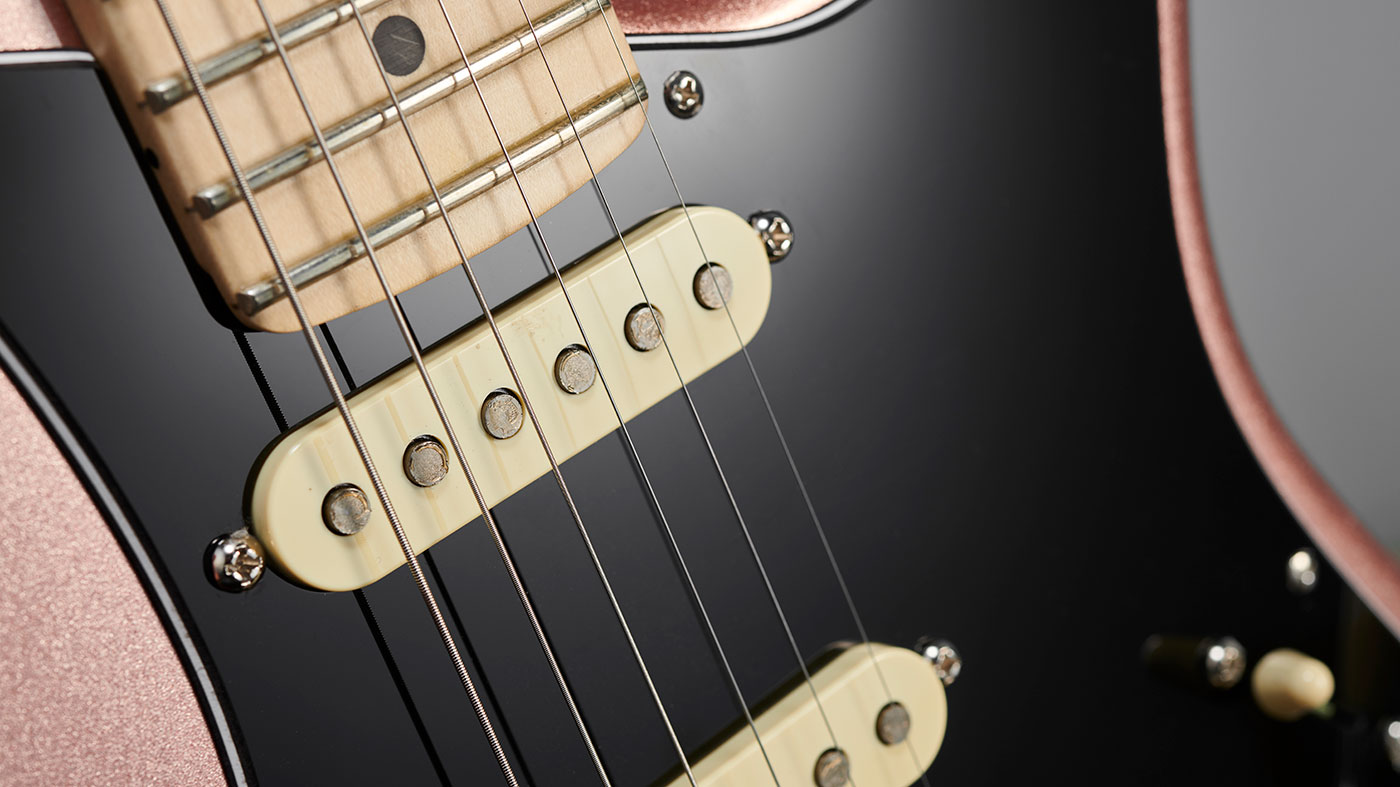Equipment tinkerer, problem solver, designer and tone doctor… Matt Gleeson is all those things. But the founder of Monty’s Guitars, now a world-renowned guitar pickup maker with customers including Mark Knopfler and Pete Townshend, is a player too. The years he spent playing over the world in a function band has informed everything he does.
“For the guitar to be heard you had to hit certain frequencies,” he explains in our extended chat you can watch above. “With the volume issues in venues, you can't just turn your amp up to be heard. So if you can create something where all the right frequencies are there and you sit really nicely in the mix then then you’re laughing.
“And so that's been through everything that I've designed. You need to be heard without just slamming people with volume.”
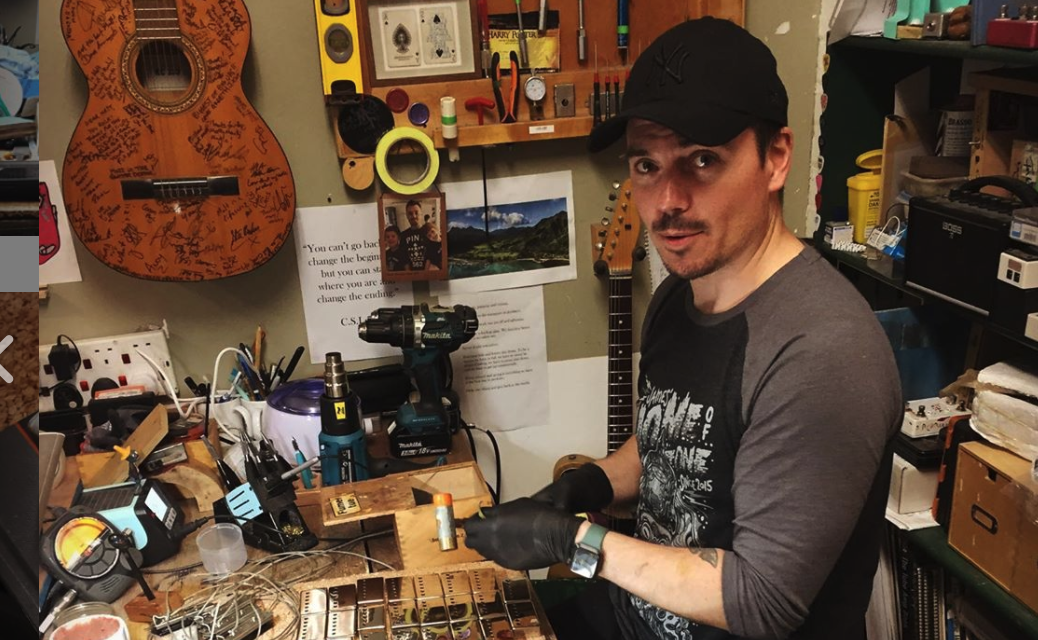
Monty’s Guitars has a small UK team based in its West London workshop (the company is moving to a larger premises in Cheltenham soon) offering an extensive range of pickups and wiring looms to allow players to achieve that while tailoring their tone.
But upgrading your guitar with new pickups and pots can feel like a bit of a minefield for some of us players, so we wanted to ask Matt about the things to consider and what differences they make.
And we also wanted to talk about one of the most exciting ranges Monty’s offers, something it has become renowned for; Matt’s recreations of classic vintage pickups in the Originals series – including the highly-prized PAF humbucker found on golden era Gibson Les Pauls.
So why are PAFs so loved? We’ll talk about that too. See the full interview above and read an edited version below.
Want all the hottest music and gear news, reviews, deals, features and more, direct to your inbox? Sign up here.
Monty's Guitars is offering 20% off everything in its store until the end of 2020 with its Stay Home With Tone sale – including all handmade pickups and looms. Check out the full range at montysguitars.com

With the Original Series players are essentially getting access to tones from pickups on vintage guitars that cost thousands of pounds. How difficult is it to replicate those pickups? Because they're obviously from guitars that you've worked on with really good examples of those pickups…
“This is where I think I really lucked out where I started my apprenticeship. In the place I started we had literally everything coming in and I was taught by guys who are so knowledgeable. I mean like Charlie Chandler, for example, what he doesn't know is kind of not worth knowing. There were loads of people. And we had actual gigging musicians coming in and out. It was the perfect place to learn.
“I was taught, not only what was good and bad but how to listen. On the pickup side of things, nobody really knew how to make them as such. That was something I kind of found out on my own, but people knew what was good, what was historically correct and all that kind of thing.

"One thing that is you've got to realise is that back then the manufacturing wasn’t as accurate as it is now. PAFs are the best example"
"I've worked on loads of early 60s Strats, early 50s ones, Bursts… all that kind of thing. But one thing that is you've got to realise is that back then the manufacturing wasn’t as accurate as it is now. PAFs are the best example; they range in output hugely, each coil can be the same. It can also be offset slightly or it be vastly offset. They used different magnets depending on what they could get hold of.
"Literally, they were just they were making the product and they weren't thinking about the granular detail of things. So all these old pickups do sound different and yes, everything plays a part. So depending on the guitar they're in they’re going to sound different and that kind of thing. But not only did I say get a plug-in to play get my hands on old actual real ones, I got my hands on guitars that were partscasters with PAFs in it and partscasters with original Strat pickups in. So you see the thread of actually what does what.
"All I did was, with the pickups in the guitars that I really liked, the ones I was really drawn to, I took readings from everything but really focussed in on those. And then you see a thread running through with what they're doing with the magnet strength, the winding, the the size of the coil – which makes a massive difference – and all that kind of stuff. You just reverse engineer that.
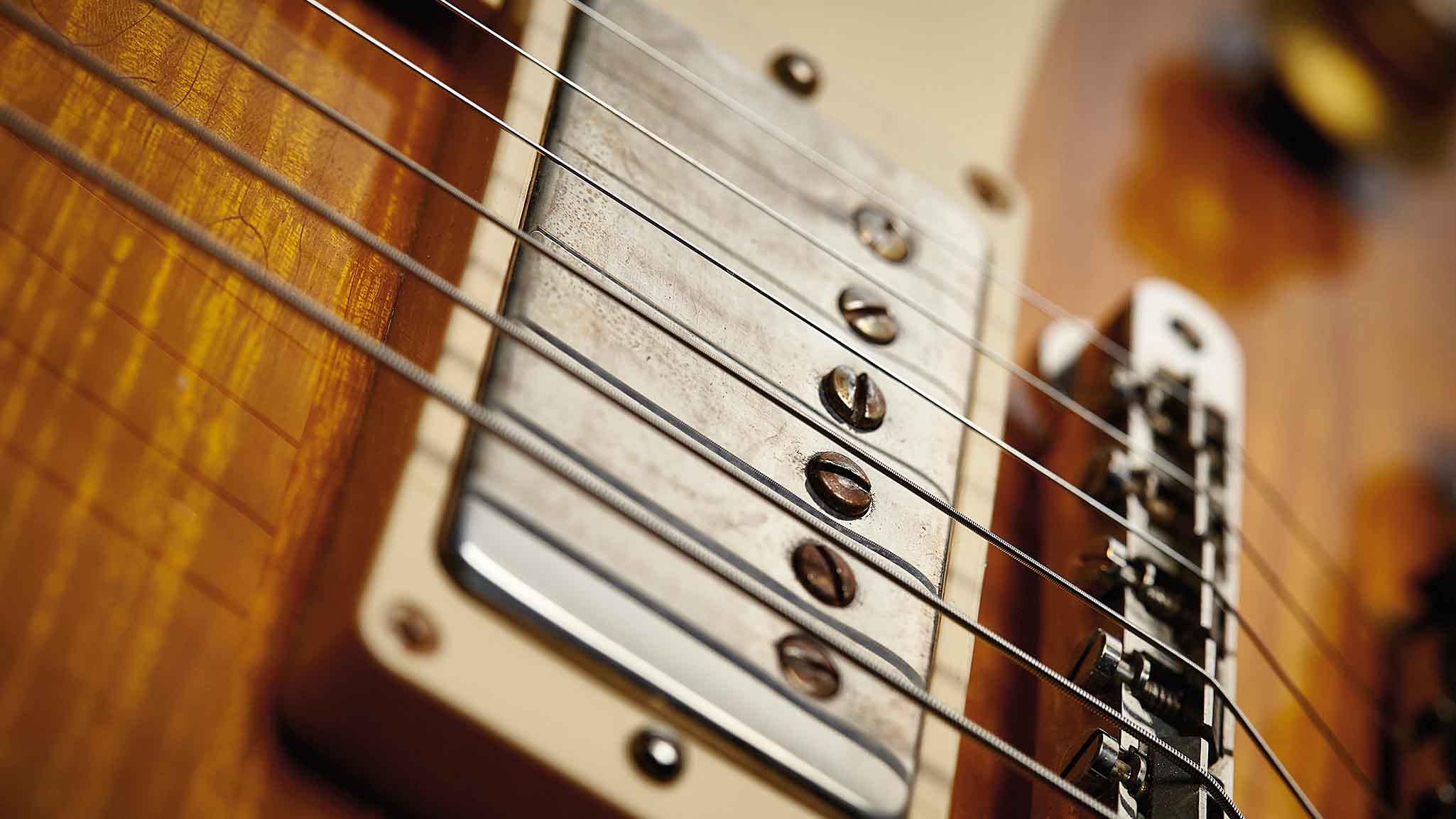
"The other thing [I've done] I've heard a lot of other pickup makers do is a lot of rewinds [the removal of magnet wire from the bobbin and sometimes returning them to original vintage spec]. So you actually get to see, it's not just taking readings from things and looking from the outside; you get to see the innards of the pickup.
"I've got what looks like a butterfly case full of old Fender coils. There’s a lap steel from ‘47 and up to the early 90s I think. But you can see the potting technique and how that changes over time.
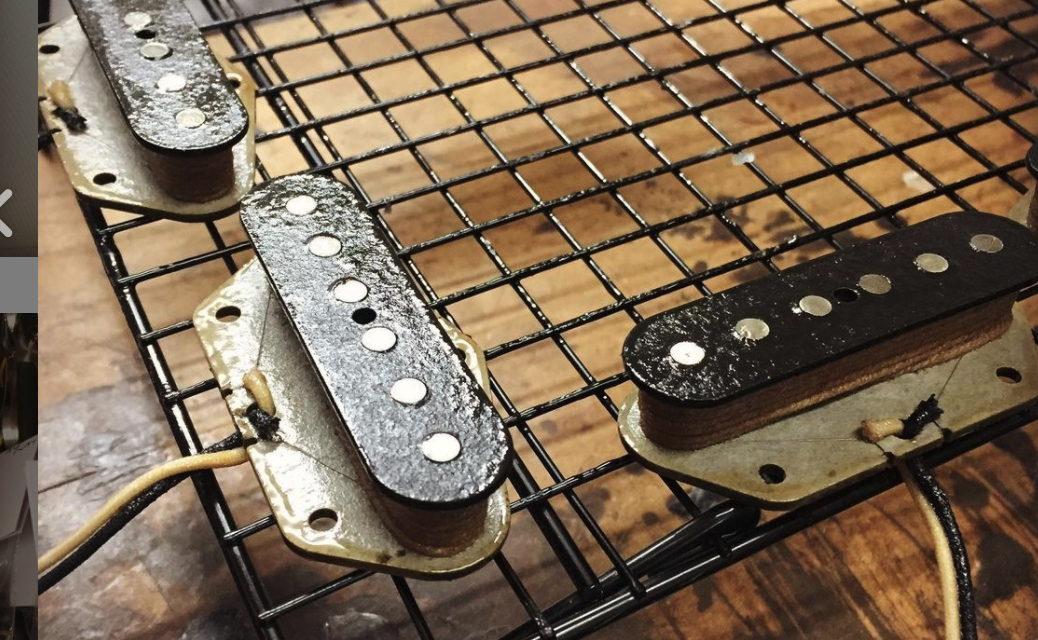
"It's that final little percentage. That's the difference between manufacturer A,B,C and D"
“The main change was when CBS took over [Fender] and they went from using wax to using lacquer. Why they did that is only a guess but with CBS I'd say it's a cost-cutting thing – it takes less time.
“But the magic that gets you is you end up with this really hard outer coating– they weren’t left in for very long so the lacquer didn't penetrate the coil. Some of the insides are literally loose which is exactly the effect you get on a PAF with the tape. So you still get this kind of movement of the coil. And people argue the toss but it is a movement, it is a movement by a tiny, tiny percent but it does make a massive difference.
“I use this analogy with time; it's like Formula One cars. They spend a hundred million quid and they’re all really fast, but then you have to spend almost that again to get a tenth of a second over somebody else. This is what I'm dealing with is, yes I make pickups, and other things, but it's that final little percentage. That's the difference between manufacturer A,B,C and D.
“Everyone's looking for a slightly different thing. The more knowledge you can put in, the more absolute geekery, which I bore people senseless with, the more you can put in then the closer you’ll get.”
“People think P-90s and they say, “Oh, Les Paul Junior kind of growl, mids, hump and all that kind of thing.” That's not what they were – they were very cutting"
So there's good examples of original PAFs and now there’s the consistency that you’ve brought in. Your take on the PAF is now world-renowned, so what would you say is special about a PAF humbucker pickup for somebody who’s never encountered one?
“The reason the PAF, the humbucker, was brought in was simply to buck the hum. Before then guitars were all single-coil so they had all the noise and stuff but people really liked the tone. And if you look at all the pickups from back then, like early P-90s, for example, which is what the PAFS kind of took over from, they’re a lot more toppy you than you think.
“People think P-90s and they say, “Oh, Les Paul Junior kind of growl, mids, hump and all that kind of thing.” That's not what they were – they were very cutting. But again, you've got to remember with the big bands all that kind of stuff [guitarists] were fighting against a lot of frequencies and the PAFS were designed to take over from that and buck the hum.

"The good PAFs, the ones the I was drawn to, were always the ones that sounded like a big fat Tele basically"
"The good ones are the ones that have all of that Clarity and keep that cut. They have a lot of the single coil qualities, but without all the hum and because of the natural way the humbucker is made and coils are wound in series with each other, it just makes everything sound bigger. But it's very easy to make that sort of ‘bigness’, for want of a better word, overpower the frequencies and get all the mids to sort of swamp everything.
"So the good PAFs, the ones the I was drawn to, were always the ones that sounded like a big fat Tele basically, and with those ones, the magnets are always a certain strength, the offset [between the two pickups on the guitar] was kind of always around the same amount and then around the same output.The necks were around the low sevens and the bridges around the the high sevens.

"That said, one of the best PAFs I heard was from somebody who dropped a set into a Les Paul Custom and the neck one was seven but the bridge one was like 5.2 or something, but weirdly sounded massive and they balanced really well. You find that a lot with vintage pickups actually, which is really bizarre.
"Strats, for example, they literally just wound them – they didn't have 'positions'. They didn't think about needing more resistance ‘here’ to balance ‘that’ – they literally just plonked them in and sometimes weirdly that works. It just sounds great. There's lots of oddities."
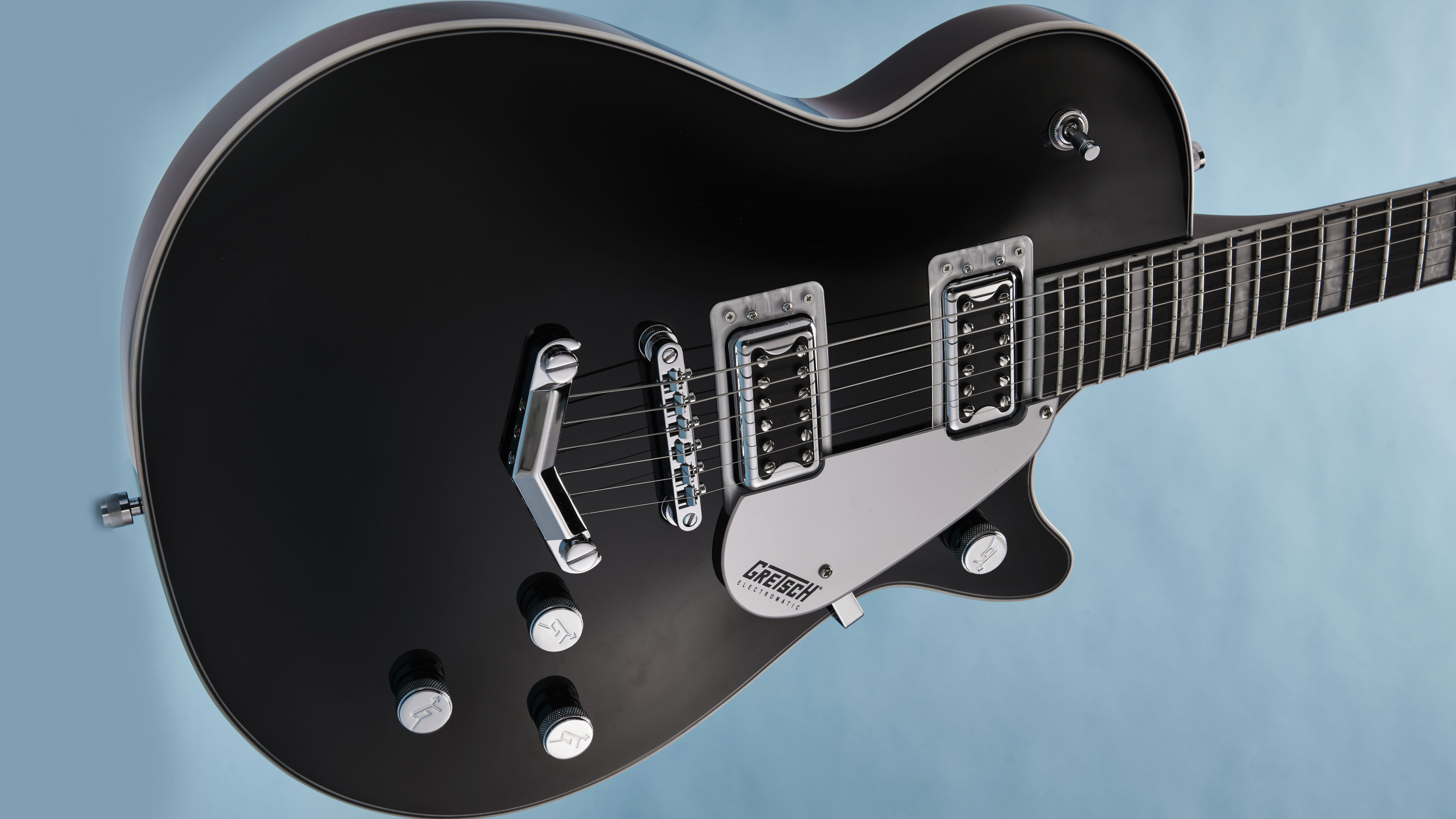
Our experts pick the best cheap electric guitars for rock, metal, blues and beyond
Talking about output, we've spoken to a few players in the past who have come back around to using lower output pickups. They find that they reflect the character of their guitar a bit more. Is that something people need to keep in mind as well? That a hotter pickup doesn't necessarily mean better for everybody?
“Yes. Exactly, and when the super distortions and all those kind of things came out , and Duncan and DiMarzio were making those really fat things, everyone was using hundred-watt heads that had huge amounts of headroom. So what you do when you make a pickup hotter is you're literally pumping out more signals.
So if using a 20-watt amp it's going to break up earlier but you’re also compressing the signals as it goes in. It doesn't always do this but it can sound a bit more muffled because the amplifier does what it says on the tin; it amplifies.
"If you can put a lower signal in and then you can cook the amp more to make that drive rather than just slamming it into the first gain stage and smothering the signal, for want of a better word.
"Hotter isn't always better"
“Hotter isn't always better. Be more dynamic and use the volume control, that's a key thing that people often neglect. Using that to vary your tone means that you can have your amp on really nice break up when it's fully open but then back it off and it's all nice and chimney and clean. That's where the whole 50s wiring comes in and then trouble bleeds for people who want that and all that other glorious stuff.”
And a lot of the great players, such as Clapton, they weren’t using pedals to get that dynamic.
“Yeah, exactly.”
It’s taken to playing a Les Paul Junior-style guitar to actually teach me to adjust the tone control more as well. The limitation kind of forces you to think about it.
“Exactly, it's a beautiful thing. The amount you can get out of fairly little is amazing. You know, I'm the first to put my hands up there. I’ve got a pedalboard the size of South Africa. I love all that kind of stuff. But the more tonal options you can give yourself that are there already and don’t cost you anything, you should use them."
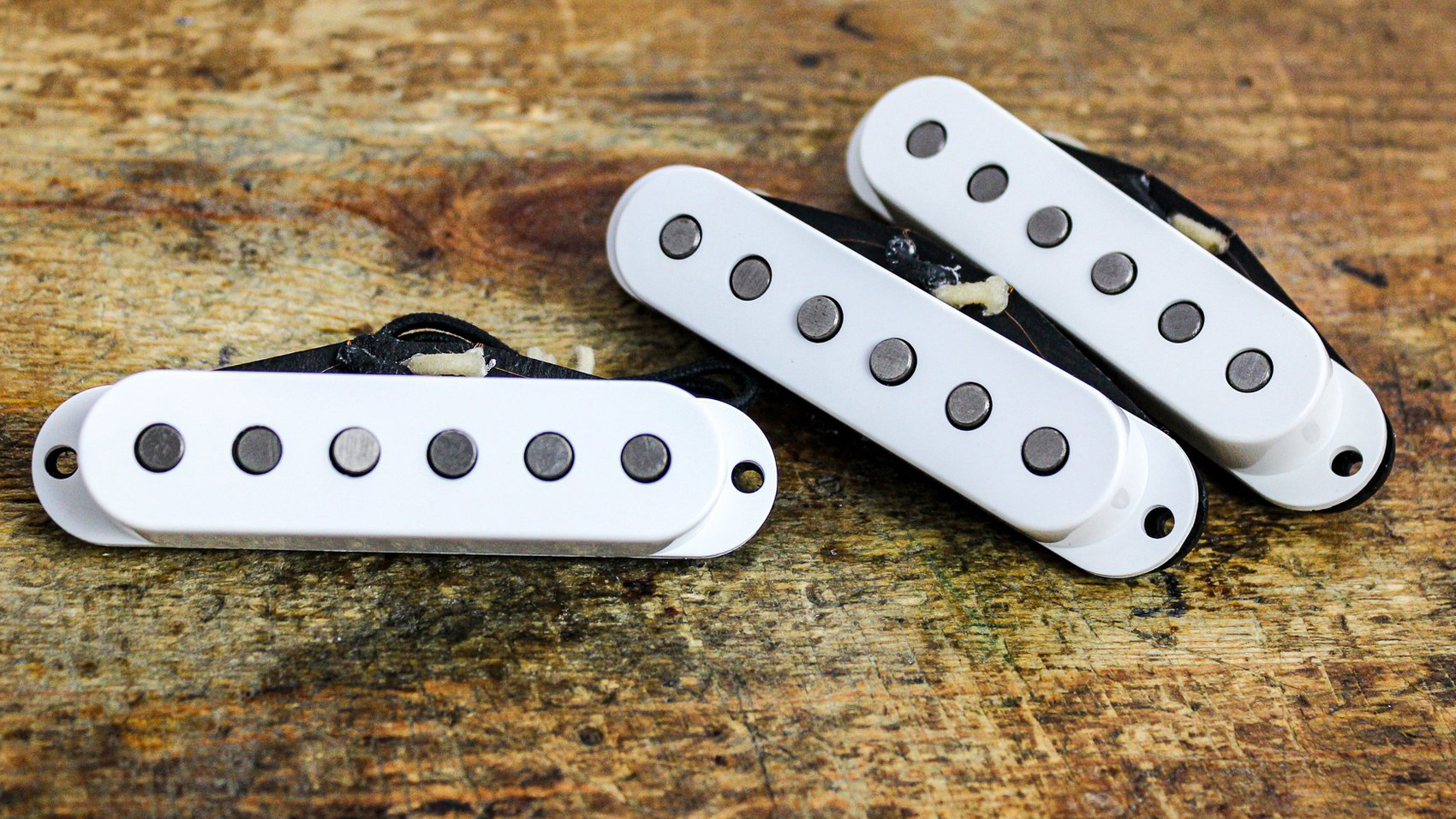
"Whatever you put into your guitar, be it pickups, looms, bridges… it means nothing if the strings aren't vibrating as they should do"
The choice of pickups to buy out there, even on the Monty’s site, could be overwhelming for somebody who isn't happy with the existing sound of their guitar. What do you think are the questions they need to ask themselves first before choosing a pickup?
“I think one thing which is really, really overlooked, and I’m most likely going to do myself out of some sales, but make sure that your guitar is set up properly. Whatever you put into your guitar, be it pickups, looms, bridges… all that kind of stuff, it means nothing if the strings aren't vibrating as they should do. If you’re going to look at your guitar and start improving it, do that first because you might find that that makes your guitar sound a lot better. It will certainly make it play better and be more enjoyable to play.
“Then, the other thing is do one thing at a time; don't change everything. Then you know what has made the difference and you can save yourself a lot of time and money.
“The best thing I would say when you're figuring out the tone that you want is look at the players that you want to emulate. If you do want to emulate people, or speak to the speak to somebody who knows. Start interacting with people.
“You can you can get into forums and stuff where everyone's got an opinion.. And that is a really good thing for certain subjects but if you're unsure, I'd say the best thing is always just ask. We're not scary. Well, I'm not, I know some people that are [laughs]."
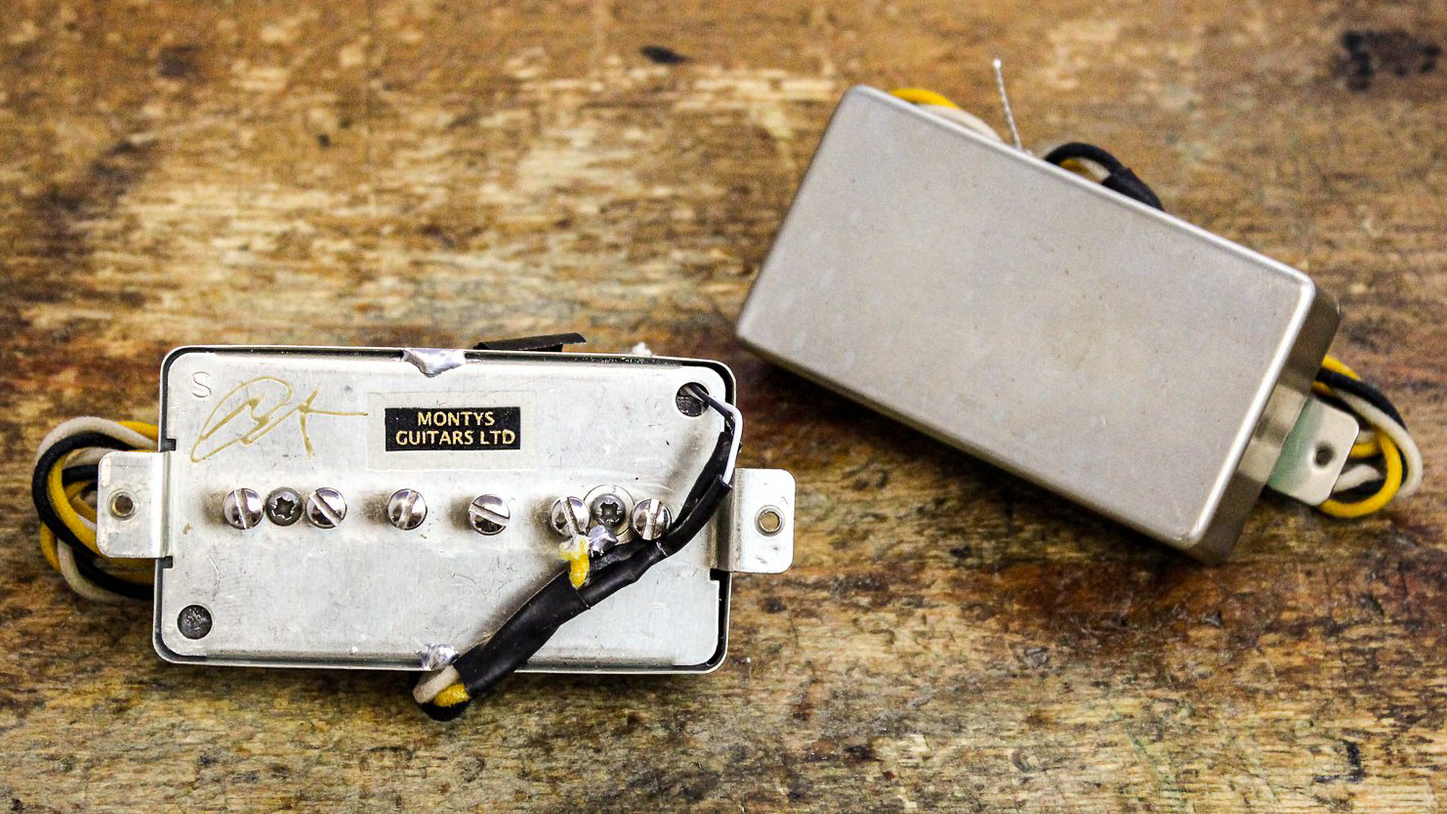
You’ve got the Turncoat range of pickups too so people aren’t necessarily limited to the choices they might imagine. For example, you do a P-90 pickup that goes into a humbucker routing.
“There are tons and tons of possibilities and we do a whole ton of custom stuff too. So if you want something that you don't see [out there]… and it's not only me, I mean most manufacturers will do this. Just talk to us and we can guide you on wherever you want to go.
“But also one thing a lot of people don't say is that I make the pickups for the frequencies I want to hear but everyone's going to make them slightly different. it goes back to that Formula One thing or there's millions of analogies that I bore people with.
“There's been times where I’ve pointed people to another manufacturer, purely because I know they’re going to get a better result out of that than coming to me. My Strat pickups, for example, worked well with one person but the Tele pickups just didn't fit. But I’m more than happy to point them to someone I know, where that’s where their ears are.
"That’s the beauty of where the industry is at the moment. There are quite a few guys making really, really cool stuff so we can cover a lot of bases and get people what they want.”
"A pickup is something that transfers the physical movement of your string into the start of your signal. That act, depending on how it’s done can change your tone dramatically"
You mentioned earlier about the importance of making sure your guitar is set up right, but do you think that some players misunderstand what a pickup is actually doing?
“I think so. Again, this goes back to people keeping things secret and not letting all the information out. So there’s this mystic thing over all of our industry, loads of stuff but what I get a lot is, ‘It’s only magnets and white – how hard can it be?’ When you look on the face of it, it is magnets and wire but there’s a lot more that goes into it. And as I said earlier, the actual coil size and where it is in the magnetic field changes things.
“A pickup is something that transfers the physical movement of your string into the start of your signal. That act, depending on how it’s done can change your tone dramatically. And people really underestimate that. They’ll say, ‘Oh no, it’s got to have nitro paint or I’ve got these tuners that were from March ‘73. March 1973 because if they were from April they would sound completely different’. There's loads of those things which people can get drowned in.
“I guess it’s just the way I am – I need to know how things work. I got into I got into tennis and then spent weeks figuring out how they make strings for the racket! I was never going to going to make one or anything, but I just needed to I need to know. Once you get to the bottom into how it all works, you see… I don’t know it’s just really cool. Ultimate geek – my wife loves our evening chats!”

If you're you're putting an investment into a guitar with new pickups, it's not going to make you love that guitar necessarily if you’re on the fence about it.
“It depends. I mean, I thought I've had people who have like been on the verge of selling guitars and this is their last-ditch attempt at falling in love with their guitar and then it becomes their favourite one. But if, in your heart of hearts, you don’t like your guitar, just sell it and get a new one!
“I’ve gone through things with guys – I don't like seeing people chuck hundreds, thousands of pounds at guitars and I know they're just not gelling with it. Again, I'm sure I've done myself out of some pennies and on the way but the customer will end up unhappy, there will most probably be some resentment at you too because you've like taken a lot of their money. Fundamentally, if you've got a problem with it, just get rid of start again.
"There are very few shops you can go to and try multiples of the same thing"
“But it goes back to when you buy guitars and this is a problem with the internet; there are very few shops you can go to and try multiples of the same thing. Because that middle rung guitar shop, which is where I learned, that doesn’t exist anymore. Well not to my knowledge.
"You've got the really big stores which are, for want of a better phrase, box-shifting, and then you've got the really little ones that will have a few pieces, but you don't have the store that would have ten blue Strats. If you want a blue Strat.
“Each one of those guitars will sound different; the necks will be slightly different, the wood will be slightly different, even if it comes from the same tree, the grain will be going a different way and wood resonates differently. Different weights… all of that stuff comes into play.
“So if you can, try as many of whatever guitar you're after and find the one that speaks to you, but often you don't get that chance, unfortunately.
“Then it's sort of figuring out what it is you don’t like about it. Speak to a really good tech, they can guide you through it – like us or Charlie Chandler. There’s loads of guys out there that really know their stuff and can guide people along the way.
“That’s another thing people don’t know, they’ll buy a guitar and not realise there's this whole other side to it if you get it set up. It’s not widely known – I didn’t know about it until I went to guitar college. I went there I was what 19/20 and I’d been playing since I was 11 but at no point did any teacher explain that side of it.”
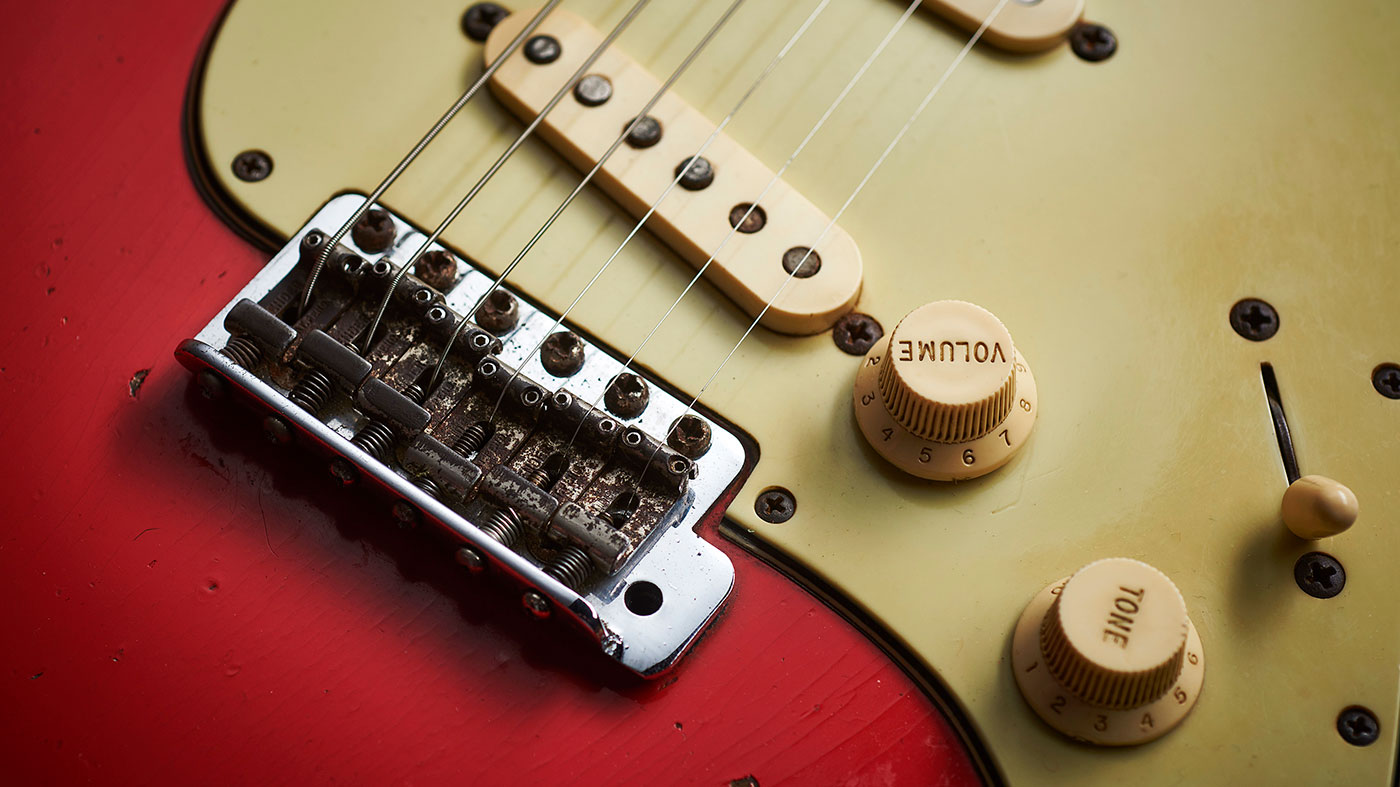
Also there can be a perception that new guitars come out of the box perfectly set up.
“I think the one that does it the best is PRS, love them or hate them. The build quality is second to none and they're the ones that can reliably ship their guitars all around the world knowing that the wood is going to be as it was as it left the factory.
“Very few manufacturers dry the woods out properly. Especially lower end guitars. A lot of it is made with fast-growing woods… the wood isn’t necessarily dried out at all so from the end point of manufacture, by the time you get it, the neck could have shrunk slightly.
"I mean, you must have felt guitars brand new guitars where the fret ends are actually sticking out the wood and it’s because of that. It’s wood with a metal rod in it but that isn’t going to shrink so what’s that done to the neck? All that kind of stuff.
"So you need to have it up and in my mind, that’s what a guitar shop should do. You should buy a guitar, it should be set up by somebody who knows what they’re doing and then you walk away with it in the best form it can be. Then make a fucking noise! "
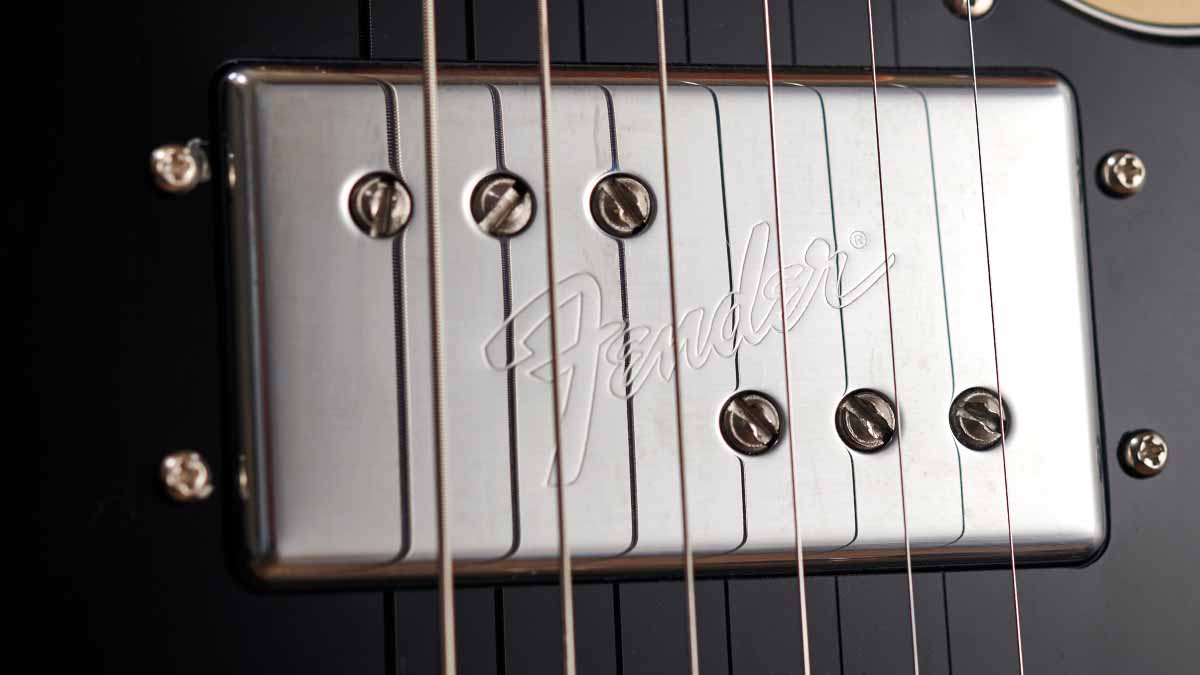
What about adjusting the pickup height yourself, should players trust their ears with that?
“There's one thing that you can't ignore and that's that you've got a magnet under something metal and there comes a point, especially on single coils but less so on humbuckers, where the magnet is actually interfering with the string.
"So as the magnetic field goes up, instead of the string being able to move freely, it's kind of caught in that and you'll get what's called wolf tones, particularly over the neck pickup. If you grab a string over where the neck pickup is it’s easier to move it there than near the bridge.
“So what I do is lower all the pickups down and then raise the neck one up until you start getting those wolf tones, then drop it below that so it stops and that's like the ceiling of where you can get your pickups to be. It might not necessarily be the best position for it. It might sound better with your setup if it's a little bit lower, but that's up to your ears really and then you balance the other two [or one] to that and you're fine.
“And it's literally that simple, but there can't be one rule for all single coils, for example. Take different magnets and that will affect it at different heights, all that kind of stuff. And it depends what gauge string you use because that’s obviously more metal. Always start with the neck pickup, that's the main thing.

Do you think P-90s are a bit of a misunderstood dark horse? You mentioned about how they started out and Monty’s offer a few different models.
“So there's the ‘54 which is copy of the really early ones, and then we’ve got the Full Monty which is basically a modern perception of what a P-90 is. So it's thicker, it's still got a lot of clarity but it hits the front end a little harder. Then we've got the Leviathan which is like you're all-out kind of rock monster. But again, back it off a bit and it clears up. It's that kind of thing.
“P-90s are great, they sound amazing. But you know, there is a thing with all single coil pickups; you then get hit with that kind of that lovely hum. At heart I'm a Tele player so it’s always just a normal thing to me. When you're not playing either keep your hands on the strings or roll the volume off.
“P-90s can sound really, really cool. I was deping in a band called The Puzzle from Hungary for a little bit. I literally had a Greco Les Paul Junior, a TU-2 and an AC-30. That was it. It was like the best sound ever, so good.
"That amp was a 1962 AC30 that I bought from Charlie Chandler for £700. Loads of bits were missing and I managed to source all the bits and a friend of mine who is an amazing woodworker made me a backplate for it which completely match it. I used that for ages and then I sold it when I got married to pay for the flowers!
“It was too loud, I couldn't use it these days anyway. I’m not bitter at all… [laughs]”

"Your pickups create the signal and then the loom and all the components within it deal with the signal until it gets spat out into your lead"
You’re now making wiring looms for guitars so we’re now talking about upgrading the guitar’s controls – can you explain to us some more about that?
“The loom is the next step in the signal path really. Your pickups create the signal and then the loom and all the components within it deal with the signal until it gets spat out into your lead.
"We use all good stuff, as lots of other guys do, but it’s the next stage of what I’d suggest someone to improve after they’ve set their guitar up, then it's the pickups and then it’s the loom. Because if your components are substandard, they can suck tone.
“The way it’s wired can change the way it sounds – the whole 50s wiring to modern-style wiring. When I say that it’s where the tone control is slaving off from the volume and the way the tone control works. It’s basically all about what the pickup can see. So if the pickup can see the tone control at all times, you’ll get this weird sort of frequency lump in the pickup at all times.
“As soon as you remove that, or make it so that the pickup doesn’t see it, it opens it out. And you’re not engaging it until you roll it on. So it makes it a lot more usable. And that’s literally swapping the tone control so it slaves off the input of the volume to the output. It’s that simple.
“All of those things, as long as you’re using quality components, can make a massive difference to the tone and how easily the tone can get out of your guitar.”
And if you have some soldering skills, buying a loom is the simplest way of doing this kind of thing?
“Yes it’s literally a drop-in replacement. We’re working on some solderless solutions and things to make it even easier for people but I’m a bit of a traditionalist. An actual physical soldered connection is better. But some people don’t have the tools and just don’t want to solder.”
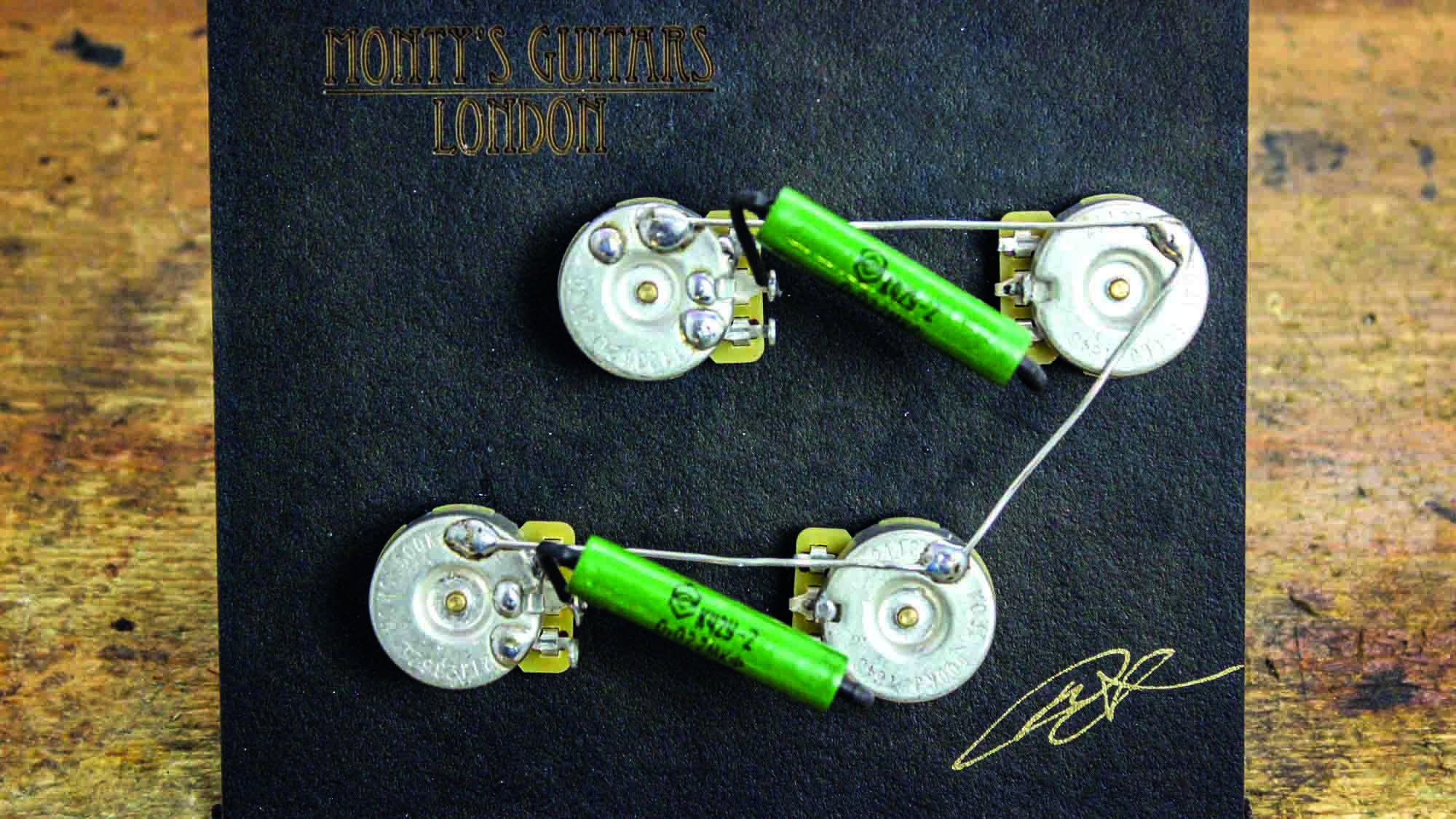
"If you're not constantly making mistakes and fixing them and learning stuff it’s pretty bloody dull!"
Can changing the pots also help enhance your existing pickups – for example, if a player feels their neck pickup sounds too dark?
“Yes, when you get your pots there will be a tolerance of what they are so if it’s a 500k pot, you might get it to sub 600k or down to 400k depending on where they come from. And if you’ve got one that’s 400k it’s going to sound a little bit dull compared to one that’s 600k.
“Also another thing that comes into play here are the lead wires that are all in your loom. If you open up the back of some of the lower budget guitars, the wire length is massive. They literally don’t cut the pickup cables shorter so you end up with what could be metres worth of excess lead in there. And that wires has a capacitance and will break your tone down – it will knock the top off your tone. It could be as simple as cutting all those down.
“I used to work with a guy back in the day called Aedy [Adrian Hardman] who made Vanquish guitars and he wanted the lead coming off the pickup to be really, really thin so it would fit some sort of special rout he was doing. So I found why I had lying around which was a zero capacitance silver cable, some sort of AB wire.
"I hooked the pickup up with that so it was the same pickups he’d used in his guitars for ages. He plumbed them in but it was way too bright. I didn’t get it – everything was the same and we changed the wind on the pickup to help get it better. And it was the cable. Just one cable changed the sound from perfect to way too bright. Again, it’s that Formula One car – all these things make a difference to the overall picture.”
Is tone a continuous journey of discovery for you?
“Yeah, every day is a school day. If you're not constantly making mistakes and fixing them and learning stuff it’s pretty bloody dull! I love being proved wrong and I get things wrong all the time. But it’s good because it means you can get better.
"I truly wholeheartedly believe it doesn’t matter whether you spent £2 or a million pounds on a guitar, at either end of the spectrum they can be really good or really crap”
The great thing about the looms and pick up some so you can take a guitar that may not have cost you very much and can make it sound pretty spectacular
“Completely I don’t know if you've seen it we did a video a while back where we took a £15,000 ‘63 Strat, and then the guy who very very kindly lent it to me, texted me and said, ‘It was £30,000’. And we put that against my mate’s guitar; back in the day he’d spent £75 on an Encore Strat. Can we get this one to sound anywhere near the other one? What could we do?
“So I did a load of work to it – I reshot the ‘board, refretted it, replaced the nut as it had a horrible plastic one. Didn’t change any of the hardware but I dumped a new loom in it and some new pickups in it. This is after me saying to change one thing at a time! But we did that and didn’t sound exactly the same, it’s a different beast, but it got really fricking close.
“So you can take guitars that you bought with your student loan back in the day and make them into something really cool. I truly wholeheartedly believe it doesn’t matter whether you spent £2 or a million pounds on a guitar, at either end of the spectrum they can be really good or really crap.”
It’s good to be able to do your own maintenance work on guitars, but one thing that feels quite specialist is fret dressing because you can’t undo filing. Do you think that’s something people should be very cautious with?
“I think I've got kind of a weird, slanted view on things because I’ve been doing it for 20 years and it’s just like a normal thing. I would say, if you're good with your hands, you're not going to do anything irreversible. The worst thing that you're going to do is need to take it to someone to fret dress it themselves or possibly refret it. But if you’re careful and you follow some of the great YouTube [tutorials], talk to someone or you do a course on it, it’s well within your remit to be able to do it.
“And you don’t need that many specialist tools. Most of the tools that are hung up next to my bench are from B&Q or another hardware store. You’re only ever going to learn something if you try it. You’ve got to start really, that’s the key to anything. But if you are unsure and you feel too nervous about doing something, give it to someone who you trust to do it.”

And it’s a great way to learn how different factors affect your guitar and its tone.
“You are going to learn so much about your guitar and guitars in general if you start tinkering with them and see what you can achieve. And if you start doing it yourself you’ll save a whole heap of money. I find it fun to do but I would quite happily sit at home and take apart a radio to see how it works. Well an old one, lord know what you’d do with a new one!
“If you are a fellow geek in that manner, do it I’d say. You’re not going to do anything really bad.”
A photo posted by @montysguitars on Nov 10, 2020 at 5:30am PST
Are some of the new products we can expect from Monty’s in the future on the relic’ing side of things?
“There is one in particular that is being released soon that is all about that. And also we’re going to be releasing a load of video on how to do it properly. How we do it – aging wood and going through that process. Because that’s another thing, people don’t give that stuff away. It’s very secretive.
“It’s a fun thing to do and I remember when the whole relic’ing thing came out. I was still at Chandlers and Nash guitars had started. People started bringing their guitars in, asking us to do it. And we said we’d give it a go. I didn’t know how to do it so we tried it out on our own guitars first – literally chucking them down the stairs and we had those really rough carpet tiles that you’d get in offices. The shop floor was decorated with those and I remember I put this double bound Japanese Tele body on the floor and ran up to it and surfed on this thing. Definitely relic’d the finish.
“People should be able to give relic’ing a go I think.”
There’s definitely something about a neck that feels older, like on a Road Worn guitar with its bevelled edges.
“That’s also because it’s been finished by hand and however much time has been spent on it. The edges are rolled in and when you’ve got a brand new fingerboard where the edges are 90 degrees it’s going to feel less comfortable than the one that’s worn in.
“I like the feel of a bare wood neck. It’s like when Music Man came out with gun oil necks and why they were so popular. They felt really, really comfortable against a glossy neck that looks like a boiled sweet and is all sticky. It’s a comfort thing definitely”
A photo posted by @montysguitars on Nov 4, 2020 at 11:18am PST
And your latest creation is a music box
“It’s a custom order for a guy who prints the music paper and records it. I don’t know exactly what he does, I think it might be library music or something like that. But he wanted a way of plugging it in. So somebody else is making big nice wooden box for it and this is going to go on top, and there’s going to be a microphone in the wooden box as well so it’s going to have this natural reverb thing going.
“And I made this pickup that I designed on our 3D printer. It’s actually made from an iron filament so the whole thing is magnetic and there’s magnets inside it. It’s wound like a typical pickup and it’s lacquer-dipped as well. There’s a 50s style tone circuit as well with volume and tone controls.
“Imagine the weird noises you can make from it – it’s really exciting. The whole reason I do what I do is because this shiz makes me really excited. I like making weird noises.”
For more on Monty's Guitar visit montysguitars.com, the company's Instagram and check out Matt Gleeson's What Goes On podcast with Audio Kitchen's Steve Crow on YouTube.

Rob is the Reviews Editor for GuitarWorld.com and MusicRadar guitars, so spends most of his waking hours (and beyond) thinking about and trying the latest gear while making sure our reviews team is giving you thorough and honest tests of it. He's worked for guitar mags and sites as a writer and editor for nearly 20 years but still winces at the thought of restringing anything with a Floyd Rose.
